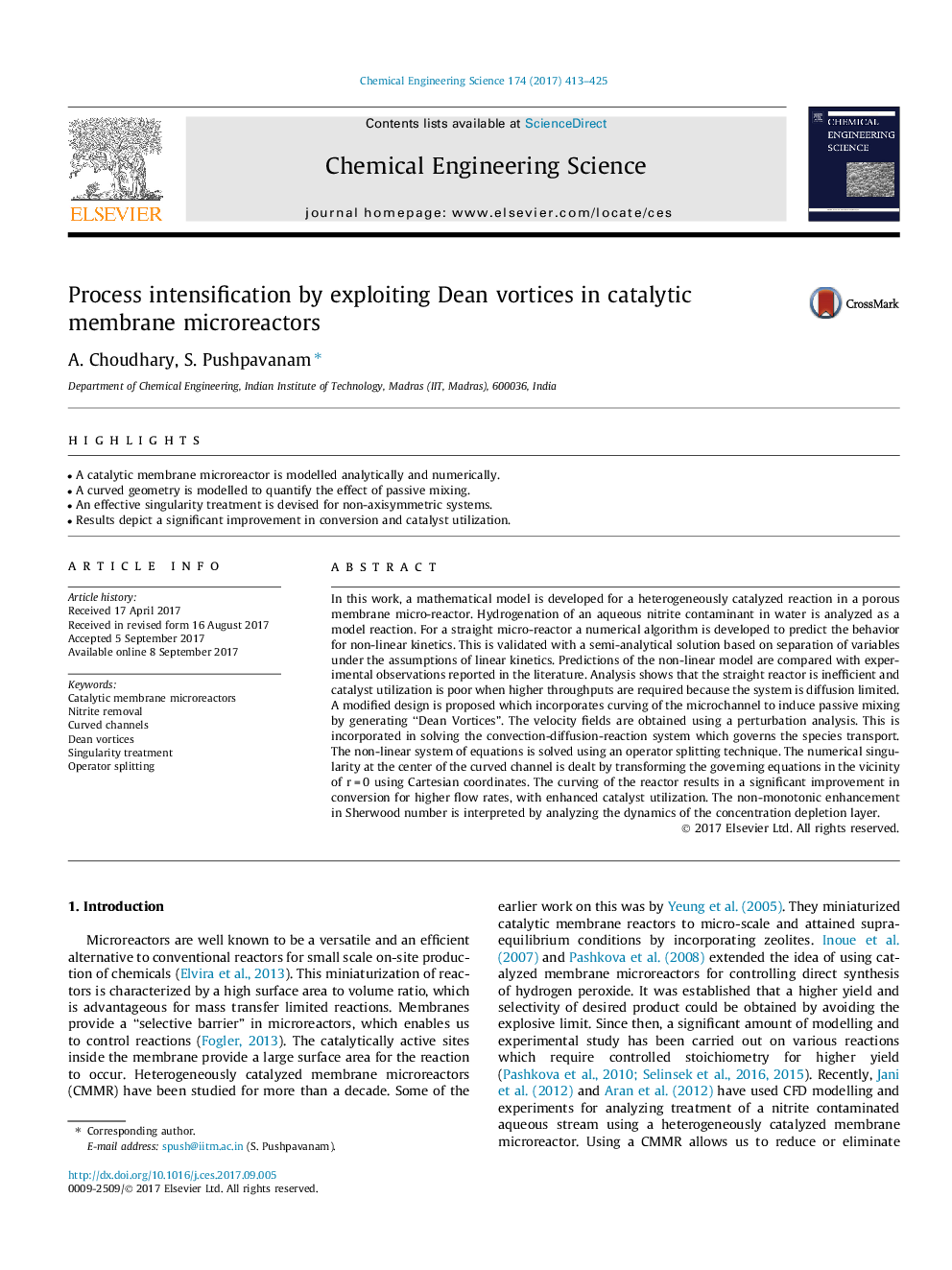| Article ID | Journal | Published Year | Pages | File Type |
|---|---|---|---|---|
| 6466923 | Chemical Engineering Science | 2017 | 13 Pages |
â¢A catalytic membrane microreactor is modelled analytically and numerically.â¢A curved geometry is modelled to quantify the effect of passive mixing.â¢An effective singularity treatment is devised for non-axisymmetric systems.â¢Results depict a significant improvement in conversion and catalyst utilization.
In this work, a mathematical model is developed for a heterogeneously catalyzed reaction in a porous membrane micro-reactor. Hydrogenation of an aqueous nitrite contaminant in water is analyzed as a model reaction. For a straight micro-reactor a numerical algorithm is developed to predict the behavior for non-linear kinetics. This is validated with a semi-analytical solution based on separation of variables under the assumptions of linear kinetics. Predictions of the non-linear model are compared with experimental observations reported in the literature. Analysis shows that the straight reactor is inefficient and catalyst utilization is poor when higher throughputs are required because the system is diffusion limited. A modified design is proposed which incorporates curving of the microchannel to induce passive mixing by generating “Dean Vortices”. The velocity fields are obtained using a perturbation analysis. This is incorporated in solving the convection-diffusion-reaction system which governs the species transport. The non-linear system of equations is solved using an operator splitting technique. The numerical singularity at the center of the curved channel is dealt by transforming the governing equations in the vicinity of r = 0 using Cartesian coordinates. The curving of the reactor results in a significant improvement in conversion for higher flow rates, with enhanced catalyst utilization. The non-monotonic enhancement in Sherwood number is interpreted by analyzing the dynamics of the concentration depletion layer.
